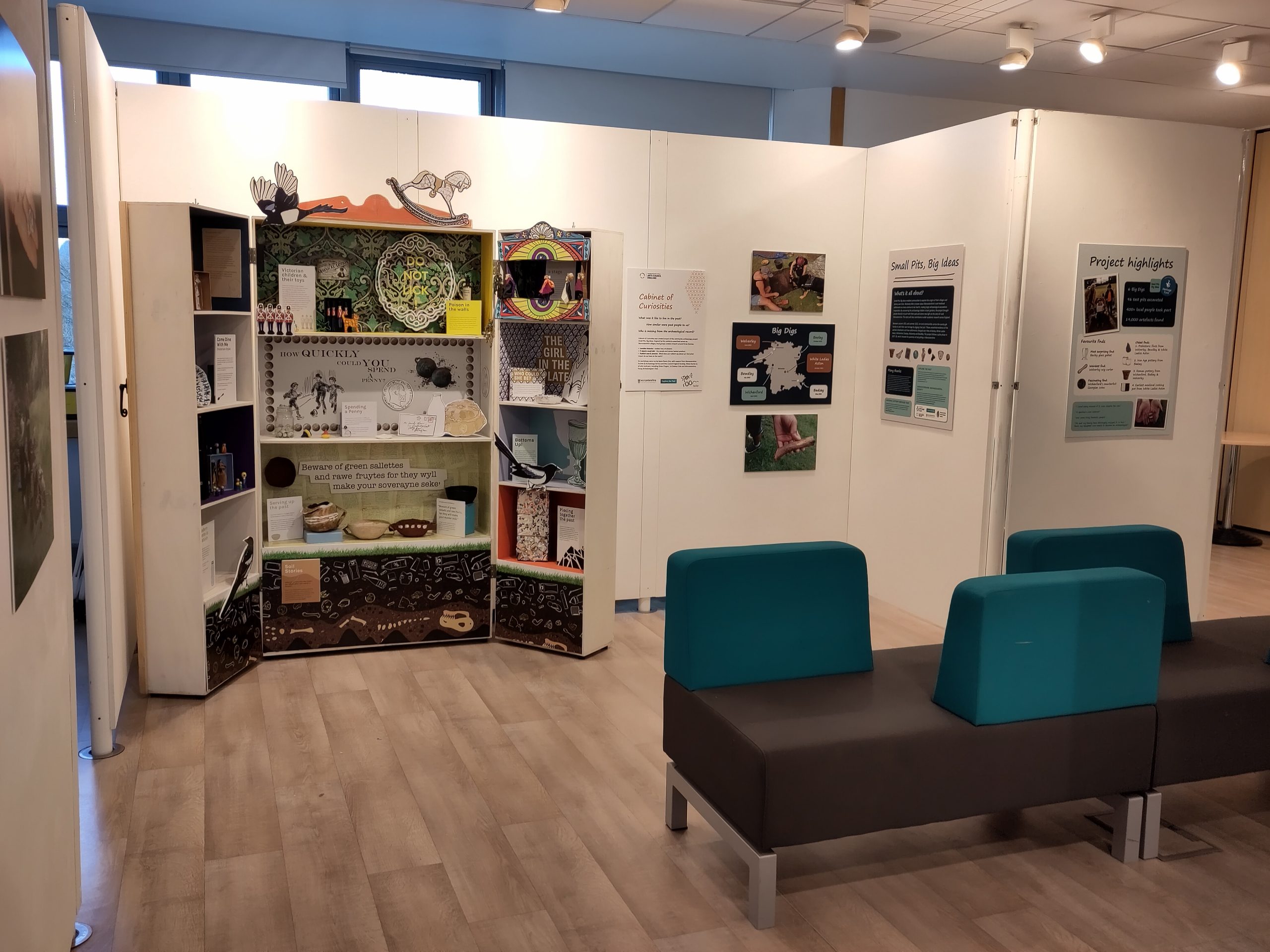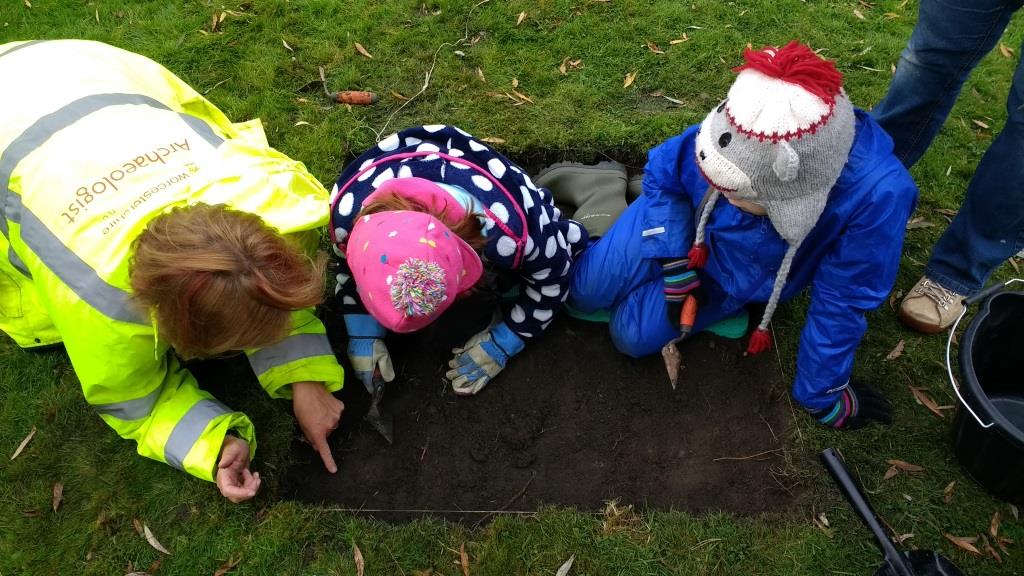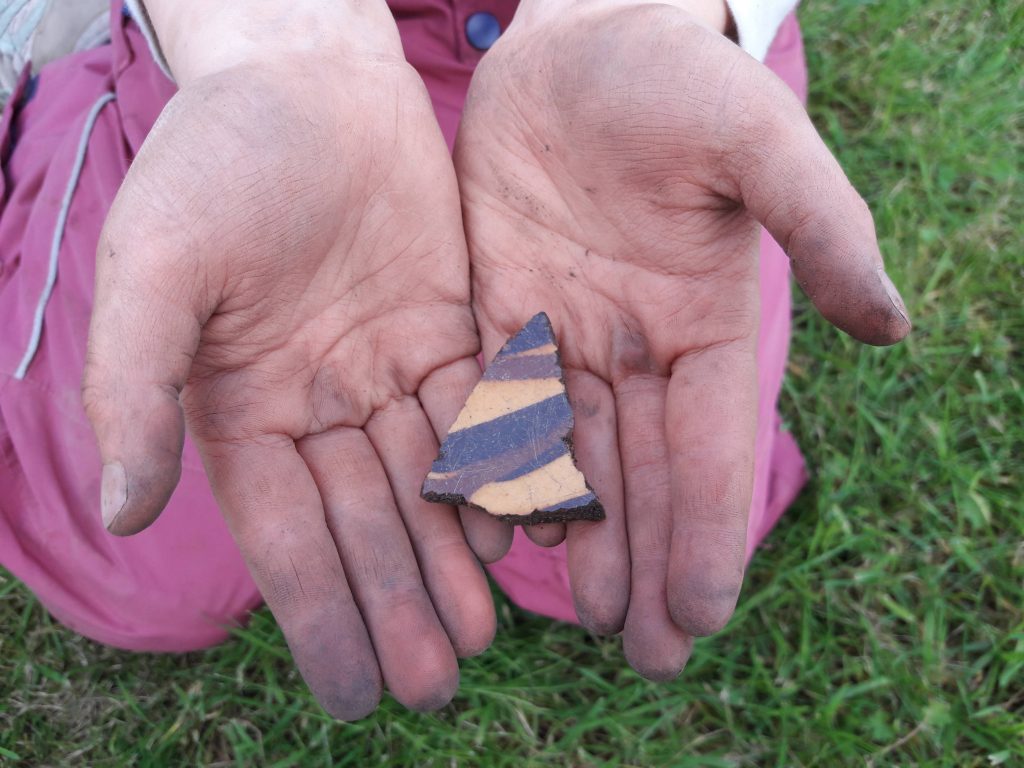Small Pits, Big Ideas
Unearthing stories of medieval Worcestershire
Beoley was the first of six settlements to be investigated by the project. Thirteen archaeological ‘test pits’ were excavated in October 2021 across the village of Holt End in Beoley, north of Redditch. Over 50 people took part in the dig to uncover the village’s origins and story over time. Once the finds had been studied and dated, the results of the dig could be shared for the first time. This talk was given in March 2022.
Looking for more detail about the stories revealed of Beoley’s earliest days?
8 archaeological ‘test pits’ were excavated in autumn 2021 across this Worcestershire village by the local community. These follow on from excavations in 2017-18 and aimed to uncover the village’s medieval origins and story over time.
You can watch a recording of this talk below, read the full report or for a quicker summary see the illustration of key finds from each test pit (in image slideshow further down the page).
Watch Wolverley’s Big Dig talk to find out what stories were unearthed from the 15 test pits excavated in June 2022. This talk was given in the village in January 2023. You can also view Wolverley’s talk slides separately.
Wichenford’s Big Dig talk was given in February 2023 and a recording of this is below. The talk runs through the key finds from each of the 20 test pits excavated in April 2022, before looking at the wider stories uncovered about the parish’s past.
Bewdley’s Big Dig took place in July 2022, with 21 across Bewdley town centre, Wribbenhall and Ribbesford. Listen to the talk below to find out more.
A talk about Badsey’s Big Dig was given in March 2023 and the recording is available below. For those looking for more details, the excavation report will be available around the end of April.
Take a look at the illustrated maps (further down the page) for a quick overview. If you’re looking for a bit more details – but not the full report and talk – then we have a series of blogs just for you:
If you’re interested in an overview of all six Big Digs and the combined pictures they revealed, then take a look at the Small Pits, Big Ideas summary report.
With a little knowledge, it’s possible to find out roughly how old a pot sherd is. For those interested in working out the broad age of pottery found in your garden or allotment, as well as those involved in archaeology looking to hone you finds identification skills, we have produced some resources to help.
How to identify pottery
This 6 part series of short videos is aimed at people who want to find out more about pottery in archaeology: how to identify it, what it tells us, and some of the types you’re likely to find.
Watch part 1 below or click on the links to head straight to that video.
| Part 1: Introduction | Part 4: Romans |
| Part 2: Analysis | Part 5: Medieval |
| Part 3: Prehistory | Part 6: Post-medieval |
Worcestershire ceramics database
If you’re trying to identify pot sherds found in or near to Worcestershire then take a look at our online ceramics database. It contains descriptions, high resolution photos of pot fabrics and drawings of common pot forms. It covers the main pottery types used and made in Worcestershire from the Neolithic (c 4000 BC) to the early post-medieval period (c 1650 AD), as well as common pottery post-1650.
Summaries of the Big Digs, showing the earliest evidence of settlement seen in each test pit and a selection of key finds. Click on the side arrows to move through the images, or view as full screen by clicking on the arrows in the top right corner. Created by Rob Hedge and Ian Gibson (Badsey).
Between January and March 2023, the project’s exhibition went on tour around local libraries. It combined discoveries from the project’s six Big Digs, alongside an ‘Cabinet of Curiosities’. Created by Spare Room Arts and local groups, the cabinet was packed with art exploring the human stories behind artefacts and hidden lives of children in the past.

Small Pits, Big Ideas exhibition in Kidderminster library
Worcestershire Archaeological Society (WAS) has received a National Lottery Heritage Fund grant of £62,700 for an exciting county-wide archaeology project – Small Pits, Big Ideas II. Made possible by money raised from National Lottery players, the project will enable six rural communities across Worcestershire to explore the origins of their settlements and contribute to academic research through the archaeology hidden in back gardens.
Relatively little is known about the history of Worcestershire’s rural medieval settlements as many remain lived in, making large archaeological excavations impossible. Through small test pits in gardens across each village, the Small Pits, Big Ideas project will bring locals directly in touch with their past and shine new light on the growth of rural settlements across the county. This project follows a pilot phase in 2017-18, which showed the potential of test pitting in Worcestershire.

Children excavating a test pit in White Ladies Aston during the project’s pilot phase (© WAAS)
Between autumn 2021 and summer 2022, six local communities will get hands on with their own heritage by digging ‘test pits’ to find evidence of the earliest inhabitants and how their settlement changed over time. The project will wrap up in early 2023 with a touring exhibition of the finds. It is a partnership between WAS, Worcestershire Archive & Archaeology Service, Green Fingers Project, Badsey Society, Bewdley Historical Research Group, North Worcestershire Archaeology Group and Wichenford Local Heritage Group. Support will also be provided by archaeology students at the University of Worcester and Wolverley & Cookley Historical Society.
Professor Carenza Lewis (University of Lincoln), who pioneered the approach in eastern England with considerable success, explained that, “This is a fantastic project which will enable people of all ages and backgrounds across Worcestershire to enjoy the excitement and camaraderie of making new discoveries in everyday places which have never been excavated before.”

Household rubbish was often thrown in back gardens in the past, making them ideal places to look for clues (© WAAS)
Worcestershire Archaeological Society
Worcestershire Archaeological Society has been promoting the study of archaeology and local history in Worcestershire since 1854 and are committed to working with like-minded local and national organisations to help achieve our aims. Alongside an annual lecture programme, the Society’s produces news and research publications that are distributed worldwide.
www.worcestershirearchaeologicalsociety.org.uk
National Lottery Heritage Fund
Using money raised by the National Lottery, we inspire, lead and resource the UK’s heritage to create positive and lasting change for people and communities, now and in the future. www.heritagefund.org.uk. Follow @HeritageFundUK on Twitter, Facebook and Instagram and use #NationalLotteryHeritageFund
